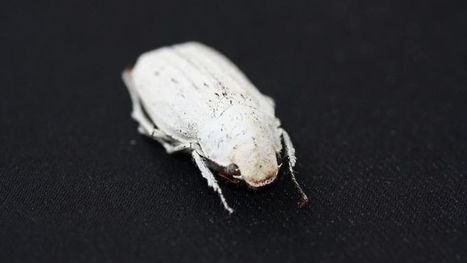"Scientists have engineered perhaps the whitest natural substance, using the same physics behind one ghostly white Southeast Asian beetle. White and black feel like opposites for a reason. Black-colored things absorb nearly all of the light that strikes their surface, while white things send the light back, scattered equally at all wavelengths. A team of European scientists have essentially created the whitest paper using this physical property."
Research and publish the best content.
Get Started for FREE
Sign up with Facebook Sign up with X
I don't have a Facebook or a X account
Already have an account: Login
 Your new post is loading... Your new post is loading...
 Your new post is loading... Your new post is loading...
|
|













